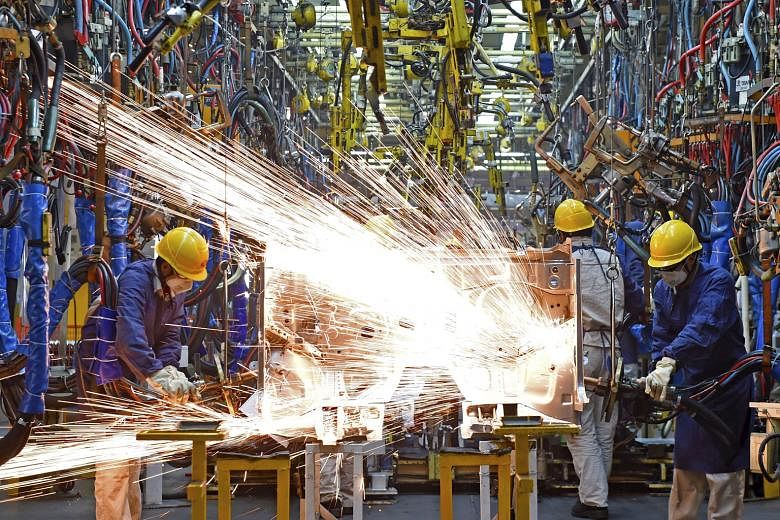JAKARTA • Factory activity deteriorated across much of Asia last month, with China sinking to a three-year low, as policymakers braced themselves for an expected rise in United States interest rates later this month that could jolt the global economy.
Business surveys showed few signs of vigour across the trade-reliant region apart from Japan, with sluggish demand at home and abroad forcing manufacturers from China to Indonesia to throttle back production, cut selling prices and shed more jobs.
"Asia's economy looks decidedly wobbly going into the year end," said HSBC economist Frederic Neumann. "A Fed rate hike would represent a further pinch."
Global policymakers and investors are bracing themselves for the first hike in US rates since 2006, which most analysts see coming at the Federal Reserve's Dec 15-16 meeting. After many months of speculation, a rate increase might remove some of the uncertainty that has caused large swings in emerging-market currencies and stock markets.
But Asian exporters will be on edge, hoping rising US rates at a time of global weakness will not backfire and stunt demand in one of their biggest markets.
"Industrialised Asia is still feeling the hurt from reduced external demand," said Barclay economist Leong Wai Ho. "The US is providing some year-end festive lift but these economies are saddled with high inventories which take time to clear."
There was little in yesterday's Asia survey numbers to cheer about. China's official Purchasing Managers' Index fell to 49.6 last month, the National Bureau of Statistics said - the lowest level since August 2012. The non-manufacturing PMI rose to 53.6 from 53.1 a month earlier. Numbers below 50 indicate deterioration. A private survey, the Caixin/Markit China PMI, which focuses on small and mid-sized companies, edged up to 48.6 last month, but still pointed to a ninth month of contraction.
Export data and a private manufacturing survey highlighted persistent downward pressure on South Korea, Asia's fourth-largest economy, from weak external demand, with factory activity shrinking for the ninth straight month.
There was much better news out of Japan, where manufacturing firms, possibly aided by a weak yen, may be producing enough to lift the world's third-largest economy out of recession.
Manufacturing production expanded by its fastest pace in 20 months last month as new orders picked up, according to Markit/ Nikkei Japan Final Manufacturing Purchasing Managers Index.
Asian central banks are for the most part staying pat for now while hinting that there is room to ease policy further if conditions do not improve next year.
Australia's Reserve Bank held rates yesterday, as did the central bank in India, where the economy is now growing faster than China's.
REUTERS, BLOOMBERG

